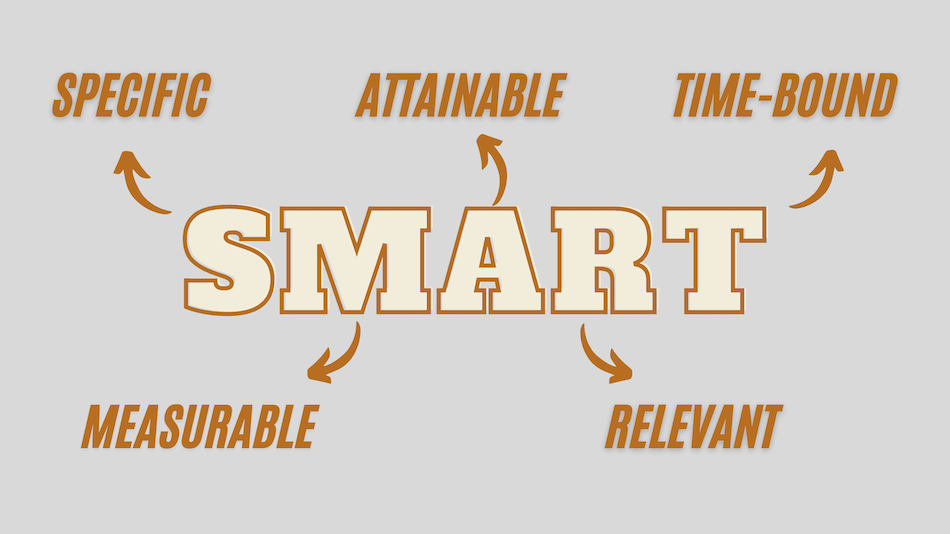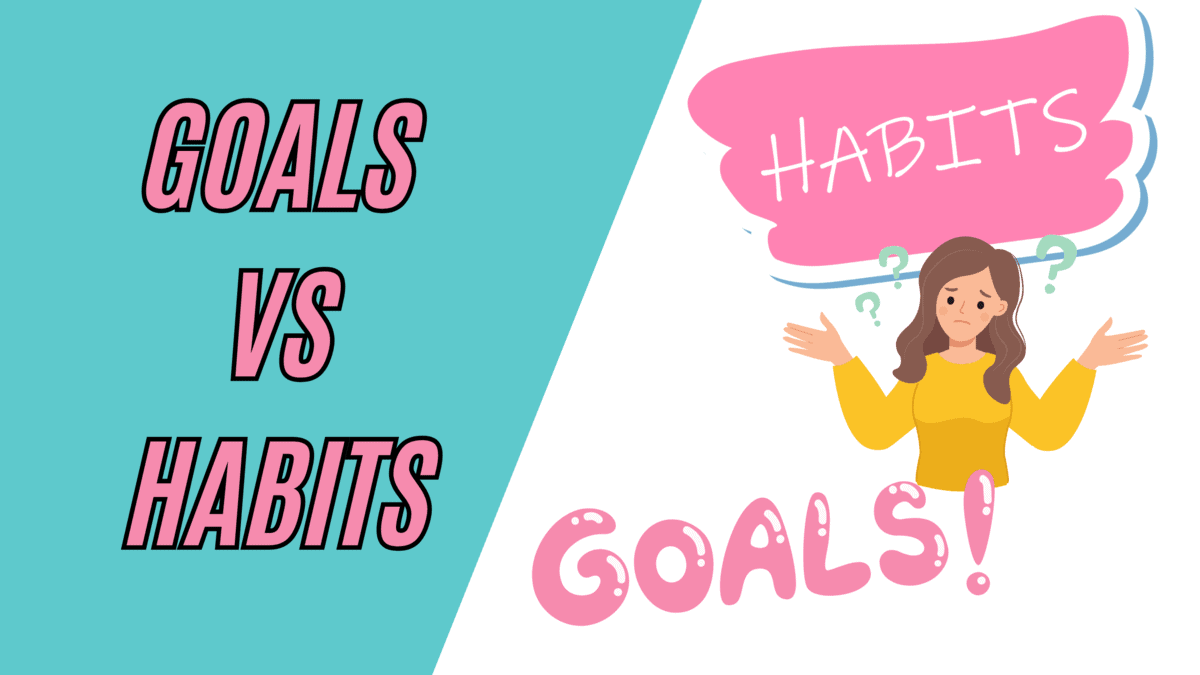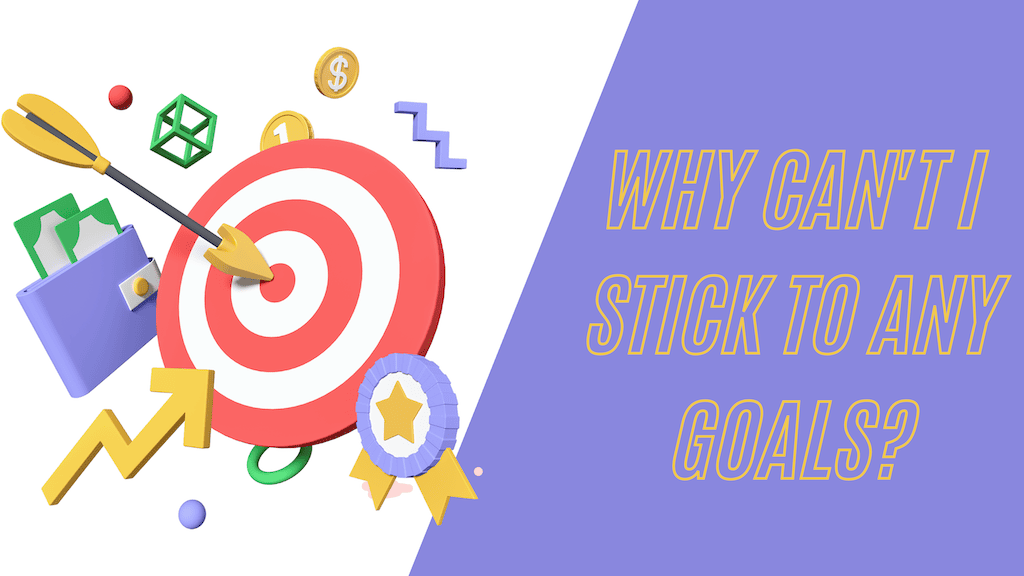Finding time to set and review my goals is a non-negotiable for me – and should be for you too.
To create any kind of structure in your life, you need to know what you’re working towards, right?
Don’t get me wrong, that isn’t to say you need to be switched on 24/7 working towards them. But you wouldn’t head to the airport without choosing a destination and the same applies here. To get somewhere you need to know where that ‘somewhere’ is.
So, if you’re wondering where to start, then start right here with the process I use as the first step to smash my goals.
When to Set Your Annual Goals?
Don’t get too hung up on this. And definitely don’t think you have to wait until the new year. Goal setting is flexible and often evolving.
Here are some great times to review your annual goals that aren’t the new calendar year:
- Your birthday
- The new financial year
- Your business’s birthday
But, if something big happens 2 months after setting your annual goals, it’s completely okay to revisit them. Maybe you’ve:
- Just had a baby
- Been promoted
- Signed a huge client contract
- Decided you want to take up freelancing or change your niche
Sometimes your goals change, so I highly recommend checking in on your annual goals on a quarterly, monthly and weekly basis to make sure they’re still aligned with your life.
Okay. Now let’s dig into the process of setting new goals…
Step 1: Set the Scene
Setting your annual goals is no 2-minute job. The outcome of this process is going to dictate where you focus your time and energy for the next 12 months so it’s vital you’re in the right headspace to be making such important life decisions.
I like to make my annual goal-setting process a bit of a ritual. Here’s exactly how to do that:
- Pick a date and block out enough time in your calendar (I’d say around 2 hours so there’s no rush)
- Turn off your phone and remove any distractions
- Get yourself comfy, make some tea, get some snacks – whatever you do to get you into a high-focus zone
Now you’re really ready to get started.
Step 2: Reflect on the Last 12 Months
Before you decide where it is you want to go, you must first take a look at where you’ve been.
Looking back at the last 12 months will give you an idea of what has been going well – and not so well – and start to give you some insights into where you want and need to focus going forward.
This year might be the one to make some big career moves, or it might be the year to focus on your relationships and spend extra time with friends and family.
I start with a few questions to get me thinking:
- What was my biggest achievement this year?
- What challenged me the most?
- What were my biggest goals for the last year?
- How does my reality compare to those goals?
- How have I grown/changed as a person? And is this a positive or negative change?
- What failures have I experienced this year? And how have they helped me learn and move toward my goals?
- What am I grateful for this year?
- How do I feel about heading into a new year?
Tip: I like to write these down and brainstorm on physical paper so that the answers really sink in. I’m more of a ‘write on whatever piece of paper i can find’ kind of person but, The physical planner that Emma is using right now is the yearly horizontal planner by Inspired Stories.
Step 3: Look Forward and Envision Who You Want to Be
Now it’s time to look ahead to the future and think about what you want to accomplish, who you want to be, and what you want to create in the next year.
Brainstorm ideas – there’s no right or wrong answer and not everything you write down has to make it into your final goals.
Start with these eight life areas and work from there:
- Health & fitness
- Business & career
- Family & friends
- Relationships & romance
- Finance
- Personal development
- Hobbies
- Spirituality
And remember, you don’t have to use all of them. If you’re happily single and a relationship isn’t on the cards for you this year because you’re focused on your career, you can scrap that area from your goals altogether.
A fun exercise here (that Emma tried out in 2022) is to write a letter to yourself. Pretend to be your future self and write from their perspective about the things you’ve achieved, where you live, who you spend time with – anything that’s important to you. At the end of the year, you can open the letter to see if you’ve achieved those goals.
Step 4: Turn Aspirations into Smart Goals
Now it’s time to set some actual, concrete goals. And I always recommend the trusted ‘SMART’ formula for doing that:
S-pecific | M-easurable | A-ttainable | R-elevant | T-ime-bound

Here’s an example of a SMART goal we set in 2022:
“Save a £10,000 emergency fund for the business by the end of the year”
- Specific: Save £10,000.
- Measurable: I can monitor our savings ‘pot’ within our bank account throughout the year to track our progress
- Attainable: We will achieve this by monitoring our monthly business expenses, cutting any unnecessary expenses, and working with our clients to encourage them to ensure they always pay on time and in full
- Relevant: This is a financially smart decision to focus on
- Time-bound: We will achieve it within 12 months
Step 5: Find Your Why
Now that you have your goals set out for the next 12 months, it’s time to really dig into the why behind them.
For each goal that you’ve written down, ask yourself and answer:
“Why exactly am I going to commit time, effort, and energy to achieve this goal?”
This will help filter out any goals that aren’t quite worth your energy. For example, if your reason ends up being ‘to flex on the boys’ then it may be better to focus on a goal that has more meaning.
Understanding and really believing in your why is what keeps you motivated and more consistent. By adding this extra layer to your goals, it keeps you in line with your big picture when you’re ticking off tasks that have value but you don’t necessarily want to be doing.
I like to write down my goals with my why, using this format:
“My goal is to ABC because I want to achieve XYZ”
Step 6: Commit and Form Habits Based on Your Goals
Now it’s time to break down your long term 12-month goals into bite-sized, achievable quarterly goals, monthly goals and weekly goals – this should be relatively easy if you’ve already made your goals SMART!
The best way to move the needle on your long-term goals is consistency.
And the best way of being consistent? Building habits.
Forming new habits is no easy task though. If you haven’t already read Atomic Habits by James Clear, then go no further before you read it. It truly is a game-changer when it comes to changing your habits.
But, if you’re just after the highlights, here are my biggest takeaways from Atomic Habits.
Start Small
You can’t run a marathon on day 1 of training. You have to start with shorter runs that progressively get longer over time or you’ll get injured.
Well, I advocate for this approach to building new habits. Start small and build it up over time.
Actually, want to run a marathon? Start with a 30-minute jog then when that feels easy, go for 45-minutes, and so on.
Want to give up caffeine but you drink 4 coffees a day and can’t seem to quit? Cut them out one at a time.
Nothing bad ever happened from starting small and being patient with yourself.
Check out our article on The Seinfeld Strategy – The secret to consistency and hitting your long-term goals.
Attach Habits to Existing Habits
The absolute best way to create a new habit is to bolt it onto an existing habit.
For example, when we first started freelancing, we were always searching for clients on Upwork, which meant we had to be on the ball when we spotted a new job posting.
The problem was that I kept forgetting to check. So to make a habit, whenever I checked my emails (roughly 3 times per day), I would open Upwork on a new tab at the same time and check it immediately afterward.
Follow this 6-step goal-setting formula and you’ll be ready to take on the next year and see some serious progress.
Next up in our goal-setting series is how to set your quarterly goals




